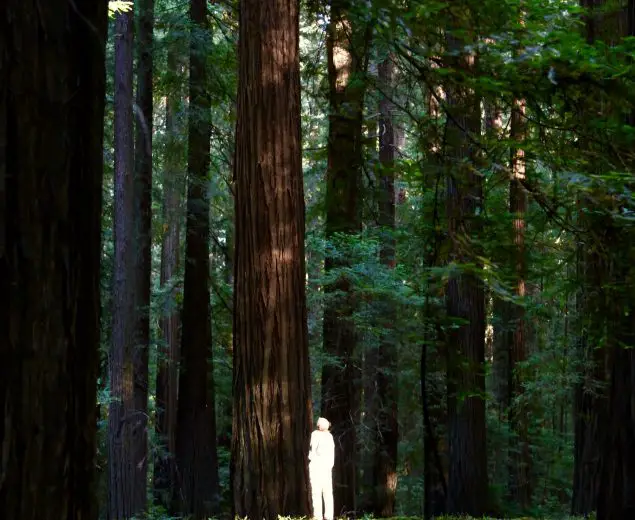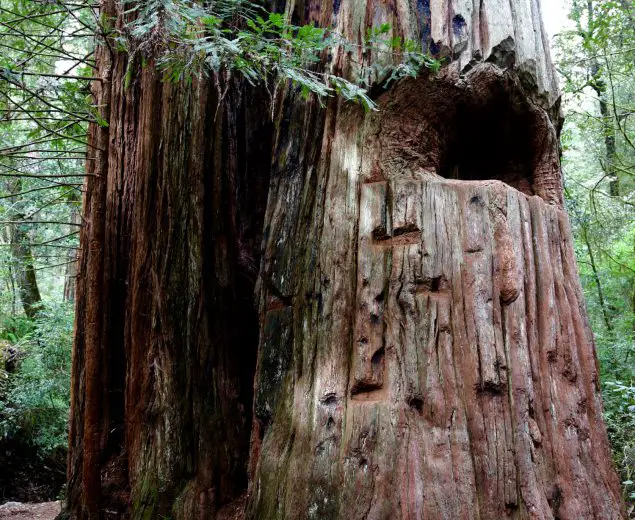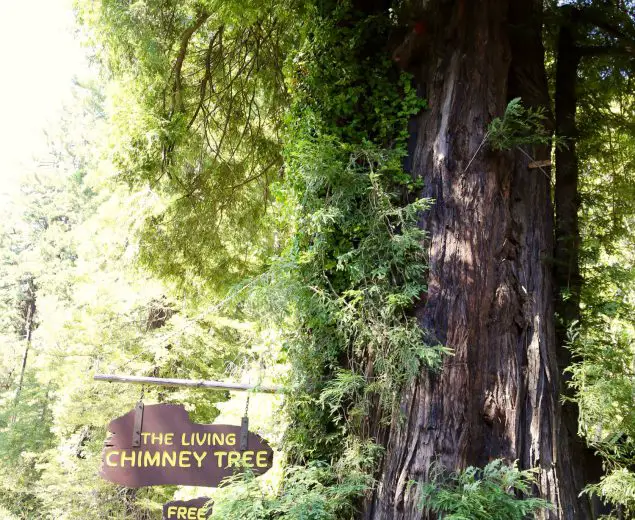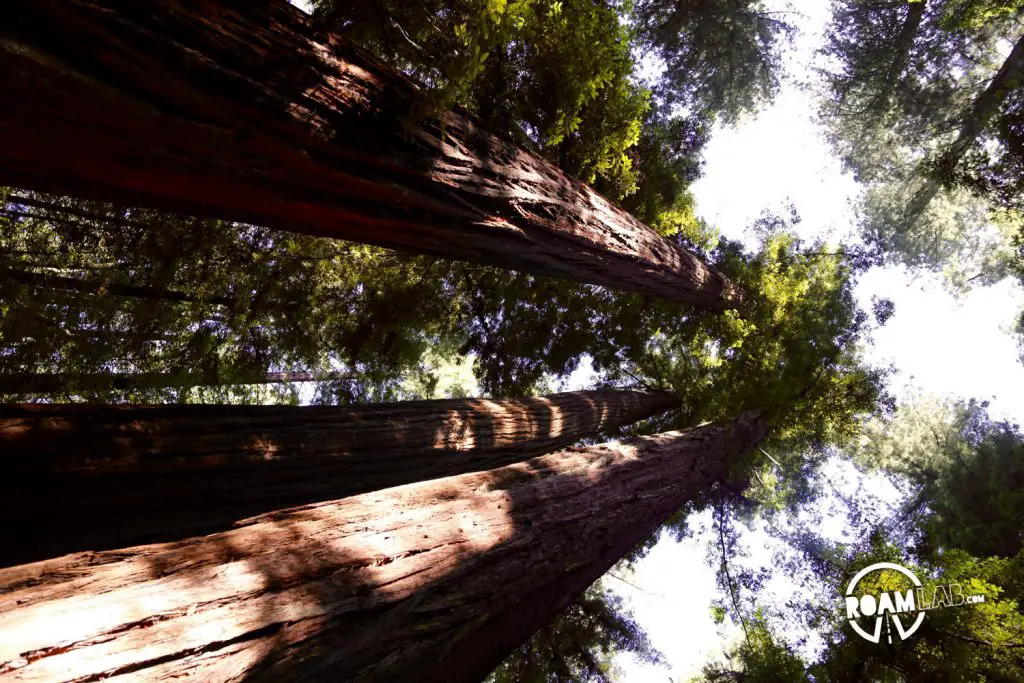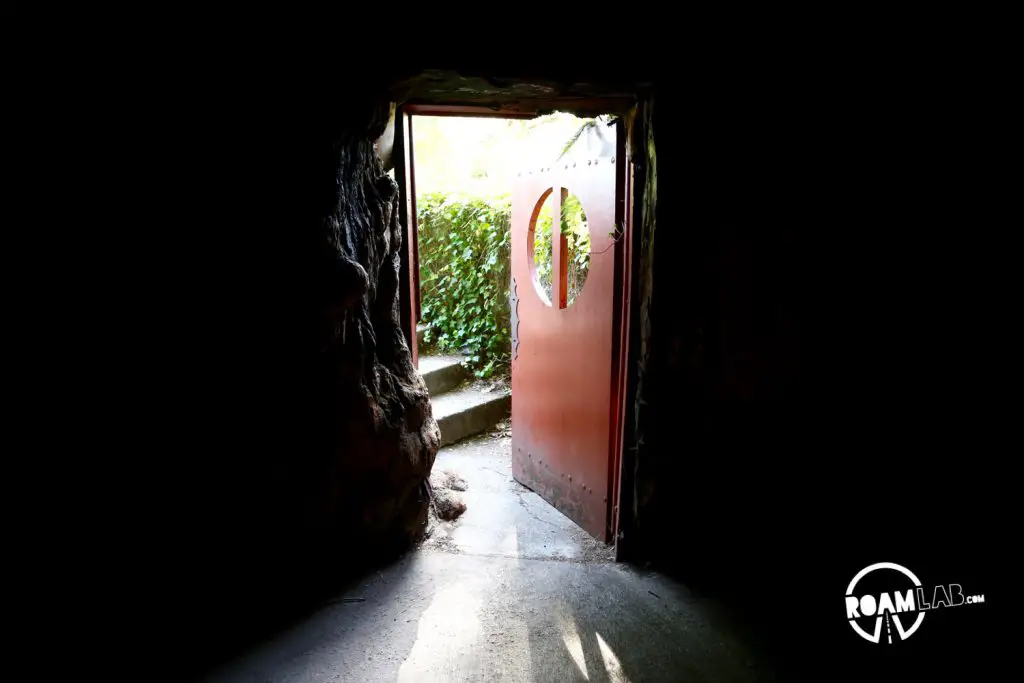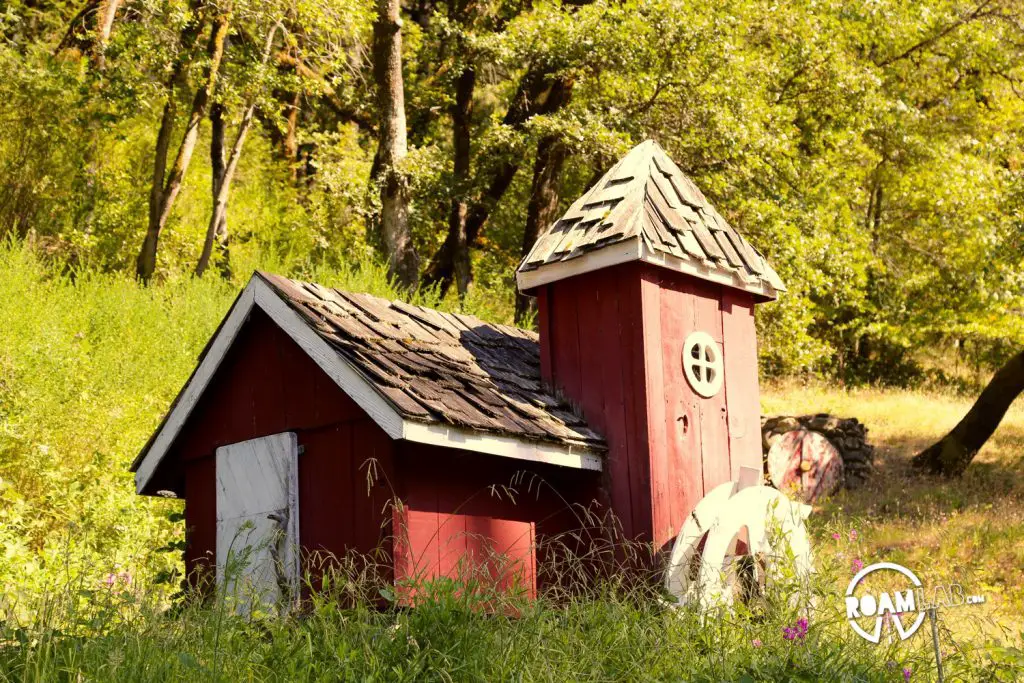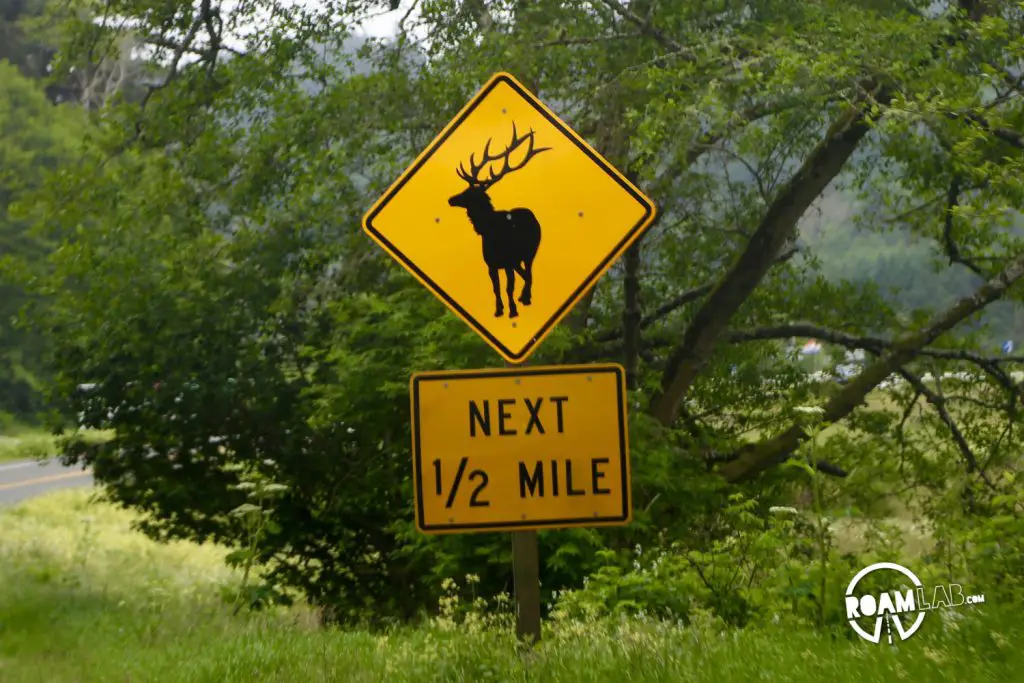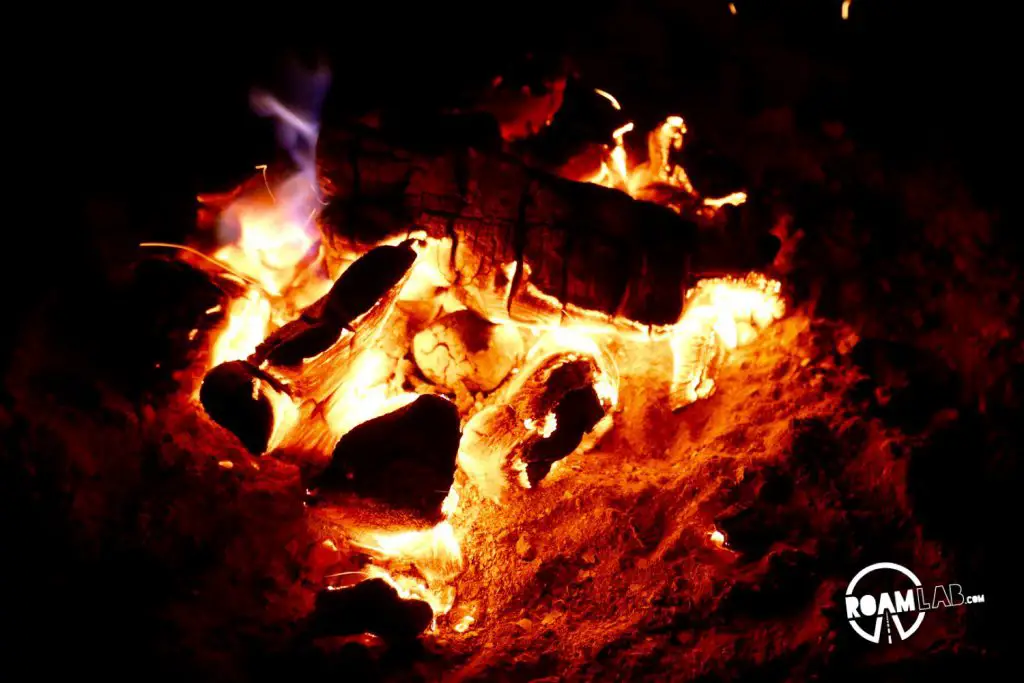Among The Giants
Redwood National and State Parks is the realm of ancient giants. Ninty-six percent of coastal redwoods have been logged, but in the parks, trees as old as 2,000 years and tall as 379 feet tower over visitors. Of the parks’ 131,983 acres, 38,982 acres are old growth forest. In addition to the forests, the parks also span 40 miles of Pacific coastline. Redwood is an unusual partnership between the state of California and the federal National Parks System. As such, it is both a state and national park. Some parts are state-administered and others federally. Enjoy four developed campgrounds and numerous trails.
Visiting Redwood National Park
Redwood National Park hugs the California coastline for 40 miles. These coastal redwoods exist in a very narrow environment with the Pacific Ocean on one side and a coastal range of mountains on the other. The geography makes for a remote region with limited cell phone coverage and access to restaurants and shops. Be sure to travel with physical maps in case digital maps fail, and pack plenty of provisions so you don’t have to make a long detour for a snack.
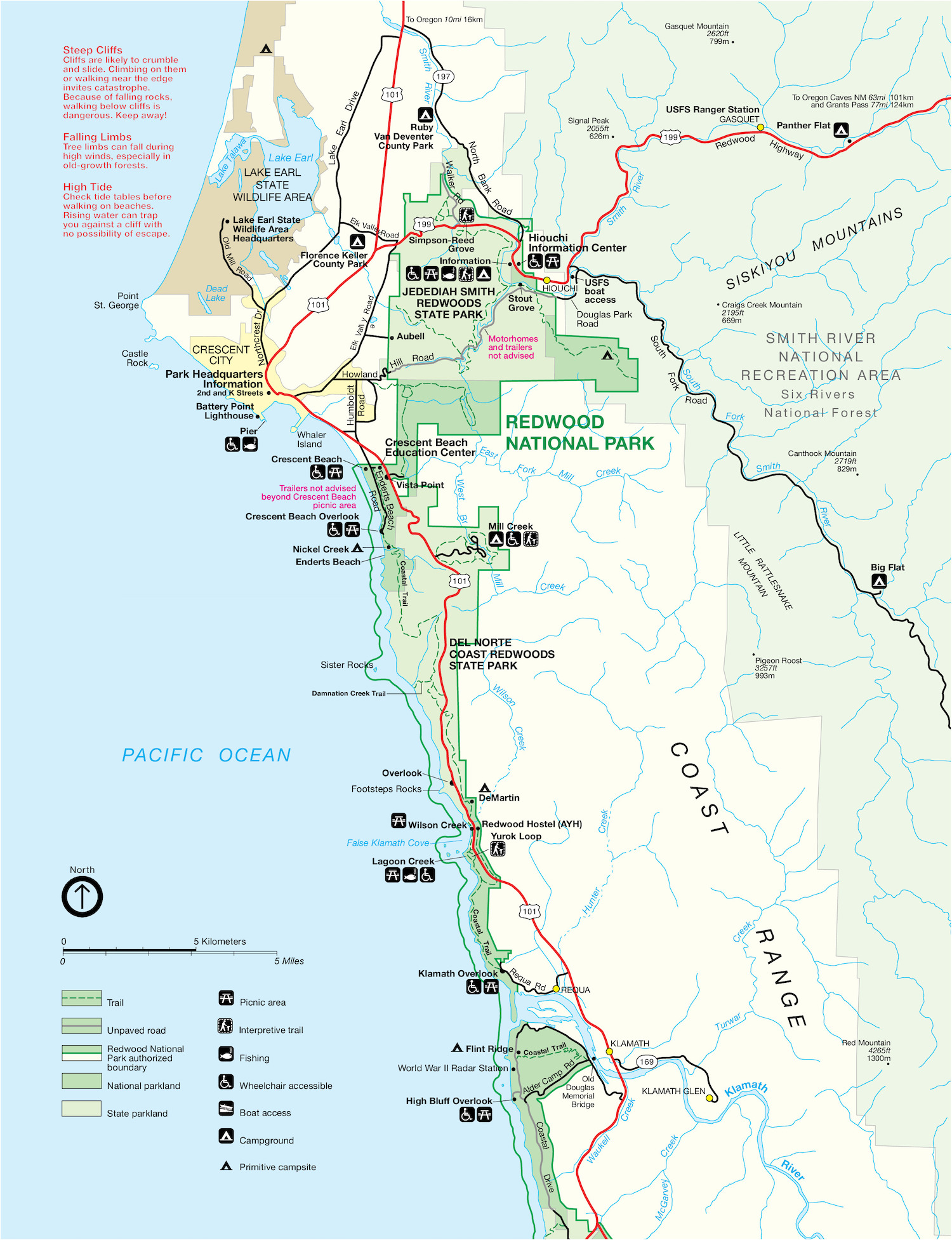
Map
Redwood National Park North
The northern stretch of Redwood National Park comes within 20-miles of the California-Oregon border and traces the coast south to the mouth of the Kalamath River. While much of the park encompasses the coast, it swerves inland at the northern point, making room for Crescent City to the west, along the coast. Crescent City is a handy point for provisioning before diving into the forests of Redwood National Park.
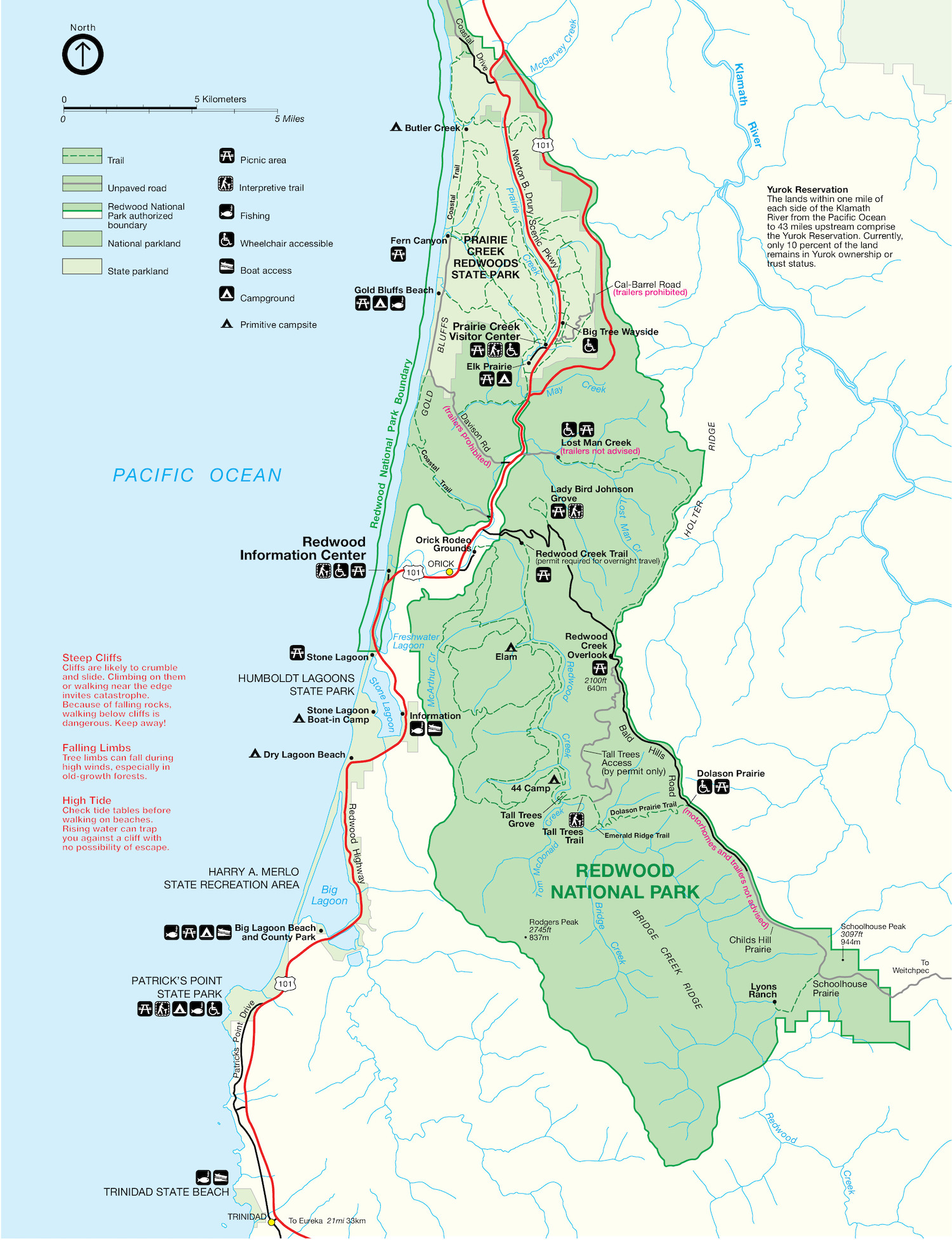
Map
Redwood National Park South
The southern terminus of Redwood National Park approaches Trinidad, California but diverts inland, like the northern end. State parks extend the coastal public land another 15-miles south of the park making for constant opportunities to explore the coast along 101 but not many options for food and other provisions.


